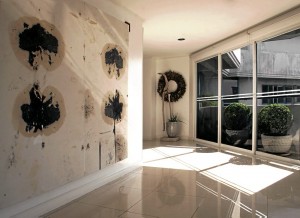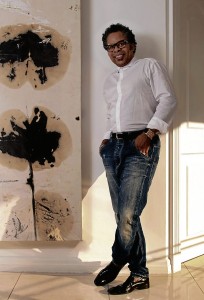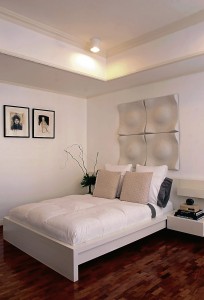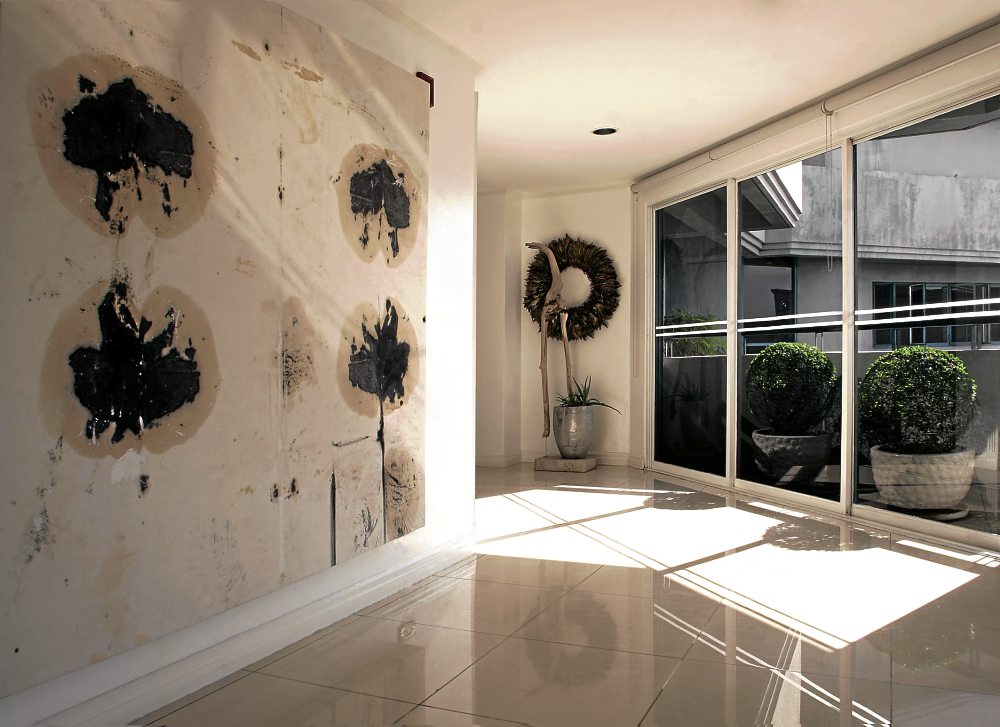 As transients, American designer Keith Brown and his wife, Karen, want to feel at home, and not trapped in an urban jungle.
As transients, American designer Keith Brown and his wife, Karen, want to feel at home, and not trapped in an urban jungle.
“When you move from country to country, you are assigned housing. Although it’s temporary, we are able to make it feel as if we’ve occupied the space for a long time,” Brown says. “Instead of buying furniture, you figure out design solutions based on where you live. We can enjoy the lifestyle that we were accustomed to and not compromise just because we are in a temporary place.”
Brown worked as a production development coordinator for Marithé and François Girbaud, and merchandisher and showroom manager for Esprit de Corps. He went on to start his company, Keith A. Brown Designs, which does interiors for architectural firms, styling for media, art direction and fashion design.
Brown’s Filipina-Irish-American wife works for an American government agency. When she was assigned here, she wanted to get in touch with her heritage. Brown says First World countries can learn from the Philippines for being creative with cost-savings initiatives. For instance, jeepneys fix up the transportation issue in a country where there are millions of people in a seven-kilometer radius.
Buying load in the neighborhood store makes communication affordable.
“I can buy a SIM card and an unlocked phone and I’m in business,” says Brown. “In the States, phone companies struggle to remain relevant because everybody wants to get you locked into a two-year contract.”
He also finds similarities between the Filipino and African-American cultures.
“We love chicken, pork, church, family, and sweet things. We don’t throw away any part of the pig. You have inasal, we have chitlins.”
People at parties
In the Philippines, Brown was editorial director for Expat Communications. He then established Hushbox Manila, an online magazine and weekly e-newsletter, when he couldn’t find substantial information on places to go in the metropolis.
“I look at the magazines and see a bunch of people at parties. The same ones every month. I’m like, okay, tell me, where are the art galleries, places to buy furniture and plants?”
When he is not editing, Brown works as a communications and content strategist.
“Be it a magazine that has been around for a while and is struggling to be significant in the marketplace, or humanitarian organizations that want to tell more social stories, there are a lot of opportunities here to do proper marketing. The challenge is in getting the word to would-be clients to understand why the time is right to adapt certain principles and ideologies.”
The three-bedroom condominium in Makati serves as his palette to express his creativity. The whitewashed walls recreate a gallery setting for his collection of artworks.
“It’s about taking the good from outside and bringing it in. People think white is sterile—only for hospitals or municipal buildings. You need to carry some elements to warm up the place. Glass brings the light in. Black walls will not brighten the space in the same way.” However, he laments that the construction of high-rise buildings around the neighborhood have slowly been blocking the sun.
Still, whatever light comes in creates beautiful patterns on the floor in the afternoon and become an ephemeral decorative element.
The visitor gets an idea of the place with a graphic portrait of President Barack Obama, a console from Evangelista, and a classic Bertoia chair. The living room is furnished with white furniture accentuated with a single green Italian chair and wooden dress forms, vestiges of his former career.
Brown says his home is more interesting with detail shots. He describes the dining room as the nerve center of the house. The main piece is a table, originally 14 feet in length, which was trimmed down considerably to fit the stairwell. It took 12 men to carry it to their home. The base is made from steel. The organic quality of the wood plays against the modernity of the polycarbonate and matte metal chairs from Ikea.
Eclectic pieces
For the pictorial, Brown set up the table with eclectic pieces: a palm tree bark from the American South hovering over the table, peacock plates from Anthropologie store, streamlined flatware from Crate and Barrel, stemware from friends, goblets and candleholders from Evangelista, and monogrammed napkins.
“Our sensibility is modern but in a sophisticated way. Modern need not be sterile. It can can be rich and can convey elegance. We enjoy taking ornate and unique things and pairing them with things that are streamlined,” says Brown.
He shows a kamagong tray from Kultura, where restaurants normally place the bill. “We thought it was a unique way to serve sushi or desserts.”
Brown brought in other things such as a home grill, which is on the balcony, and planters made in Vietnam (the local ones are expensive, he says). A conversation piece is a flower planter which doubles as a stool and a light box at night.
The hallway is decorated with Braille artworks made of boat material.
“When the economy was bad, boats were not selling, an artist made them into Braille alphabets and sold them,” he says.
The modern aesthetic of simplicity is extended to his bedroom. Still, he breaks the monotony by using a graphic-printed bedsheets.
“I like colors. They’re not typical of what you will find in a bedroom—white or those overly decorated lace numbers.”
The guest bedroom with acoustic panels was designed to soothe the senses.
“This room doesn’t get as much light as the other rooms, yet there is a certain coziness. The design style was modeled after boutique hotels. With the heat and rain in Manila after a long day, this becomes a sanctuary,” says Brown.
His home style is classic: “Take the good spaces with light and fill them with unique pieces to create interesting perspectives.”















































